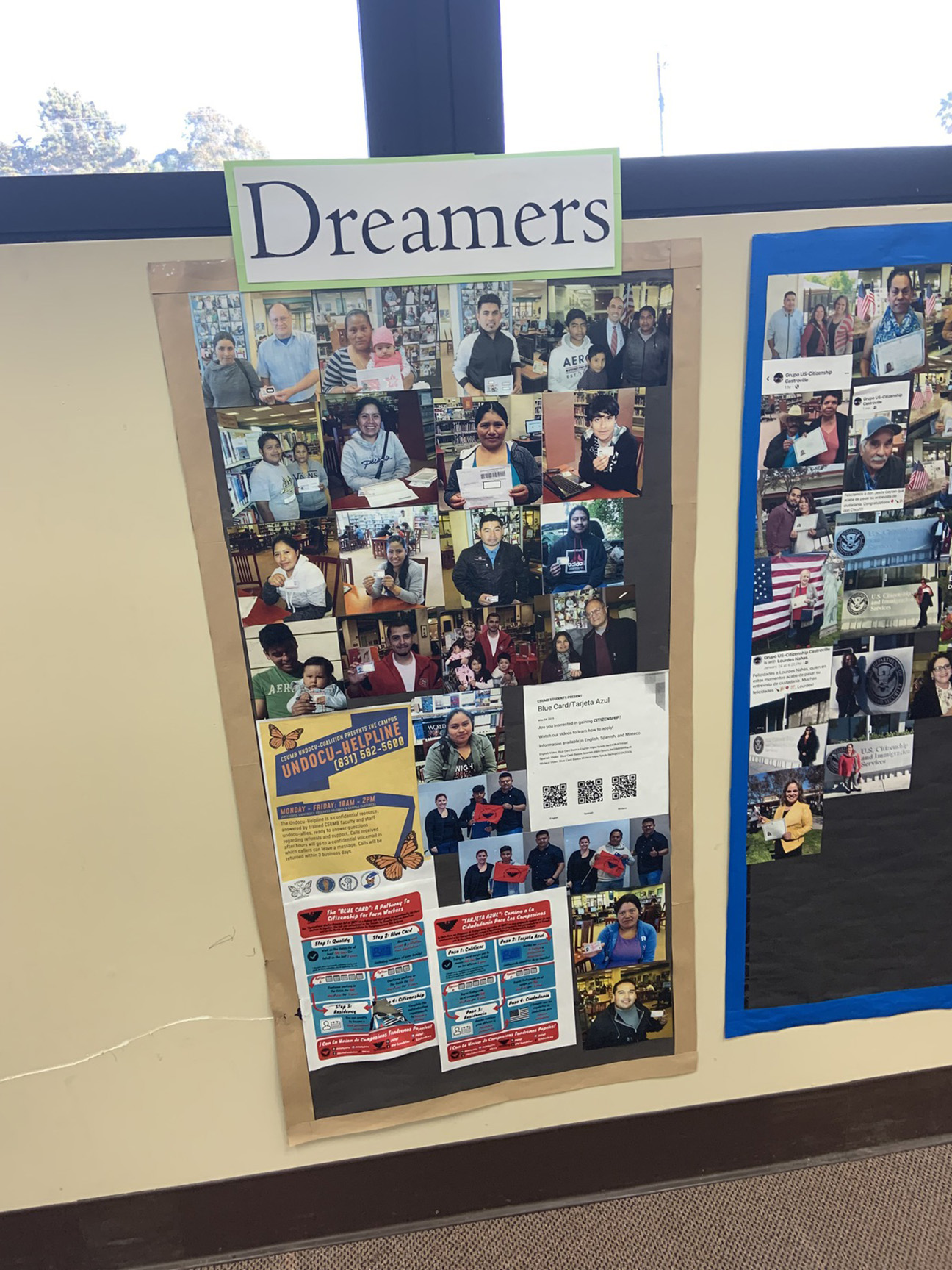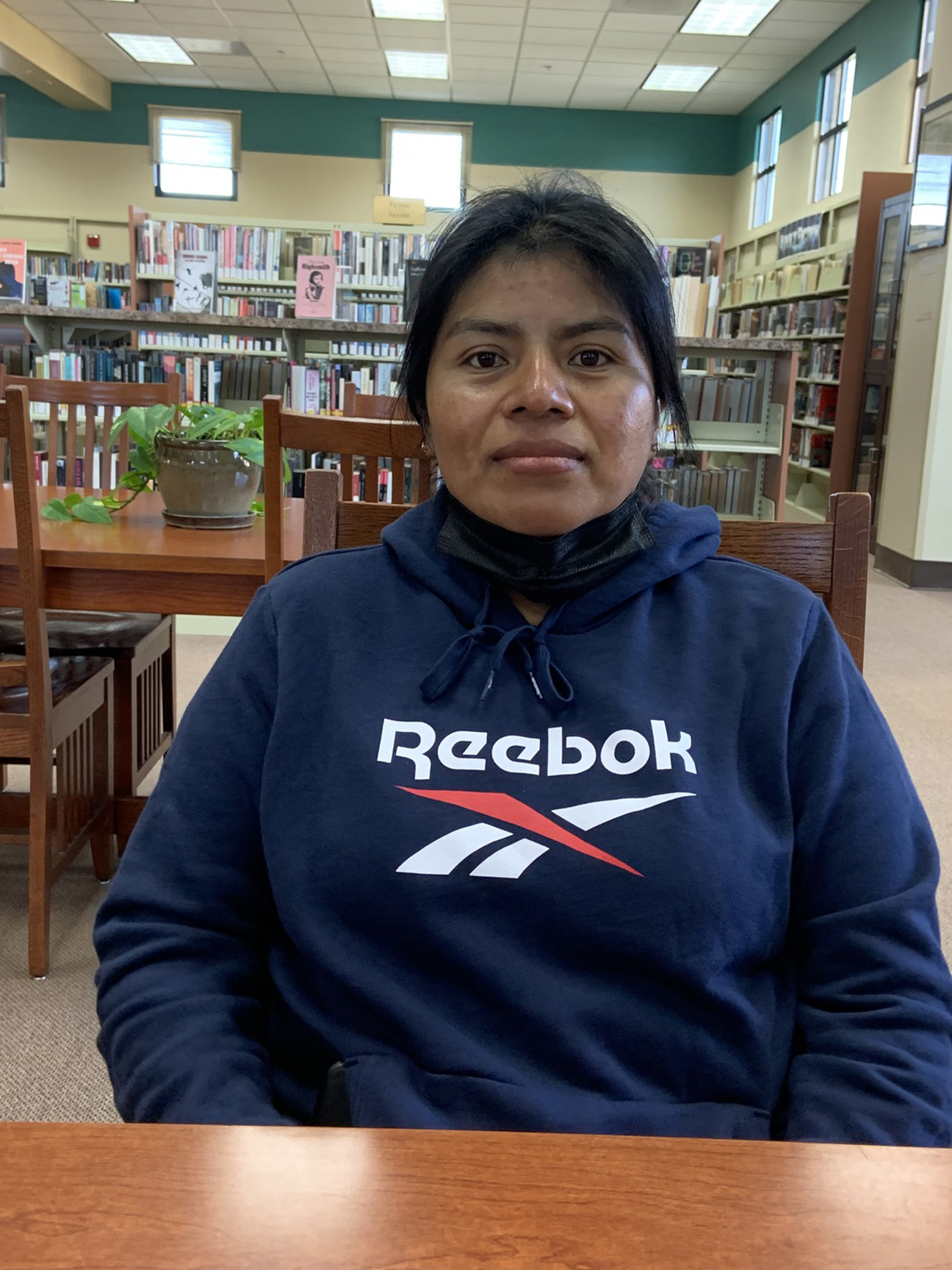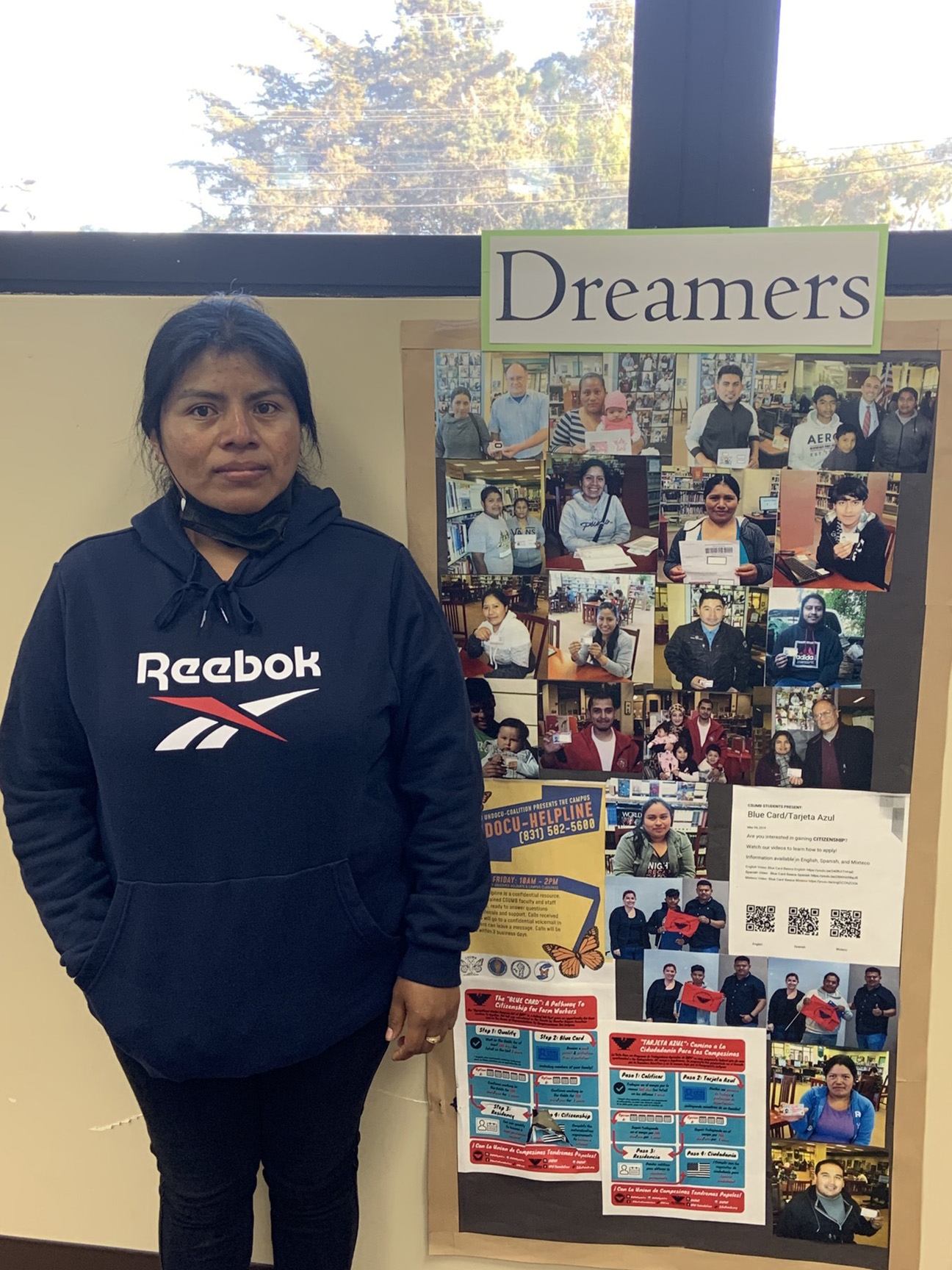| FEATURED
By Luis Arreguín
Yolanda Vásquez Maldonado came to the United States from San Martín Peras, Oaxaca, Mexico, in 2000 when she was 13, crossing the border the same way hundreds of Oaxaqueños have done in the last 20 years — walking in, without papers.
After working 16 years in the fields near Blackie Road in North Monterey County, she learned about one of President Obama’s last executive orders for Dreamers, but she thought it was not designed for her. That’s when I met her. It was April 2016 at the Castroville Public Library, where she had arrived looking for information that would transform her life.
She wanted to apply for the Deferred Action for Childhood Arrivals (DACA), but she had a big problem: she was not enrolled in college or high school and she did not have any chance to be admitted in the adult schools of the area. But she didn’t lose hope.
Enlarge

Last week, Yolanda and I met at the same library, like we did six years ago, so she could share her story so other people from our marginalized communities could find inspiration in a system that was not designed for them.
When she left San Martín Peras with her father and siblings, she had only completed two years of elementary school. She remembered that rural area teachers rarely stayed in those poor towns for the entire school year. She was 8 or 9 when they started their journey to the United States, and it took years to get there. Her family had to stay for years in Culiacán, Mexico, where she worked picking tomatoes and cucumbers, only attending elementary school for three months.
When her family finally crossed to the United States, she became a strawberry picker, a job that people from Oaxaca perform well in the Castroville and Watsonville areas. She never imagined she would go to school here.
Yolanda and her compatriots learned about DACA, resources and fees through word of mouth and consulting with each other. They also learned that some lawyers did not take the “hard” cases. All of them desperately needed such an opportunity to work legally in the U.S., but “we did not satisfy all the requirements,” Yolanda said.
Enlarge

“Some of us did not keep the pay stubs, and since our teachers in Mexico taught us in Mixteco, we could not speak Spanish very well, so going to school here to qualify for DACA was not feasible,” Yolanda said, “but thank God everything turned out to be possible.”
I also remember those days, in April 2016, when I was studying the DACA requirements along with Sally Childs, the homework center coordinator at the Castroville Library. We were searching for a feasible path for those unique dreamers who also deserved that legal status.
There were high school equivalency programs in several adult schools in Salinas, Watsonville and Castroville, to name a few. But in most cases, students needed to pass an admission test to be enrolled into the GED classes, which were delivered in Spanish or English. The admission test allowed students at the eighth-grade level to participate in classes that would prepare them to pass the five GED subjects within two years.
However, our local residents who failed to complete their primary education would not pass those admission exams, so they would not get the high school requirement to apply for DACA. Yolanda and two other immigrants from indigenous communities proved the system was wrong by preventing them from entering an educational program that would have allowed them to pursue their dreams. They only needed an opportunity, and Sally and I found a way for them to get it.
The first thing that occurred to us was finding a school that would allow these agricultural workers admission without a test. In Castroville, we found some administrators who understood that the admission test was designed for students with a history of instruction in the educational system, but prevented access to those who could not attend school for socio-economic reasons. The administrators urged us to find an adult education teacher open to working with these students.
I talked to instructor Maria Luz Acevedo, a high school equivalency instructor at Salinas Adult School and at North Monterey County Adult Education Program. She said at the time that requirements at the Salinas Adult School were strict, but she would try to accommodate these students at the Family Resource Center in Castroville. She counted on the support of FRC Director Noemy Loveless. In terms of social justice, this decision was admirable and hopefully it can become a model that can be used in cases similar to Yolanda’s., Loveless is currently assistant to the superintendent of the school district.
Enlarge

It took six years for Yolanda to pass the five subjects of the high school equivalency program known as HiSET, which is similar to the better-known GED.
“It was hard to communicate with my teacher the first weeks,” said Yolanda. “I spoke basic Spanish and Mixteco.” Yolanda took the five tests in Spanish in the following order: social studies, science, mathematics, literature and writing. “I got 14 out of 20 in mathematics,” Yolanda said with pride.
We ended our interview by walking around the library and found the wall with pictures of all the students who obtained their U.S. citizenship in the last six years. Next there was a poster with photos of unique Dreamers from Castroville, taken at the time when they started their high school equivalency education.
We saw the pictures of Adelaida González, who became the first Dreamer from the Castroville Library group to obtain her high school equivalency certificate a couple of years ago, and Erika Gonzalez from Castroville, the second Dreamer obtaining such a certificate. “My picture is not there,” Yolanda noted.
These three Dreamers attended school not just for a short period of time to obtain proof they were enrolled in a high school program, a requirement that completed their applications for DACA in 2016. They also enrolled to become the type of Dreamers that President Obama thought about when he enacted the executive order that became a powerful tool for empowerment of an important minority group.
Yolanda plans to enroll in an ESL class in Castroville next month. And she continues to research the possibility of converting her temporary legal status under DACA into permanent legal residency, like other Dreamers have done. What’s another six years?
Have something to say about this story? Send us a letter.
